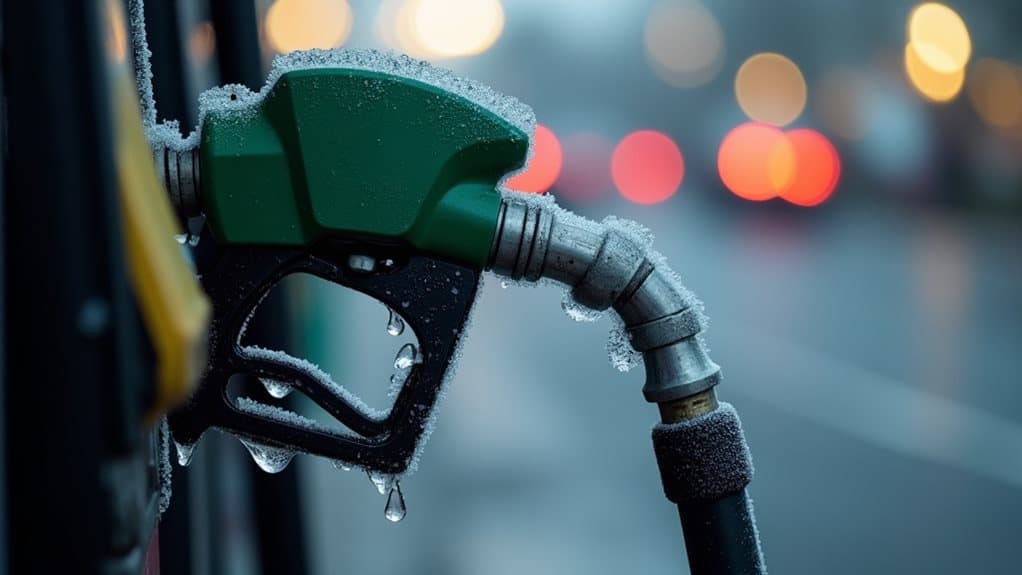Gas pumps run slow due to three main factors in your station’s fuel delivery system: clogged filters that restrict flow, leak detection systems that reduce pressure when they detect issues, and temperature variations that affect fuel density. While cold weather commonly causes sluggish pumping by increasing fuel viscosity, regular maintenance of filters and leak detectors helps maintain peak flow rates. Understanding these components reveals additional ways to guarantee faster, more efficient fuel delivery.
Quick Tips
- Clogged fuel filters restrict flow rates, causing pumps to dispense gas more slowly than their designed specifications.
- Cold temperatures increase fuel density and viscosity, naturally slowing down the flow rate at gas pumps.
- Leak detection systems may throttle fuel flow when they detect pressure inconsistencies in the system.
- Aging pump components and poor maintenance can reduce performance and slow down fuel dispensing speeds.
- High customer volume at gas stations can lower tank pressure and decrease pump speeds for subsequent users.
Understanding Common Filter Issues
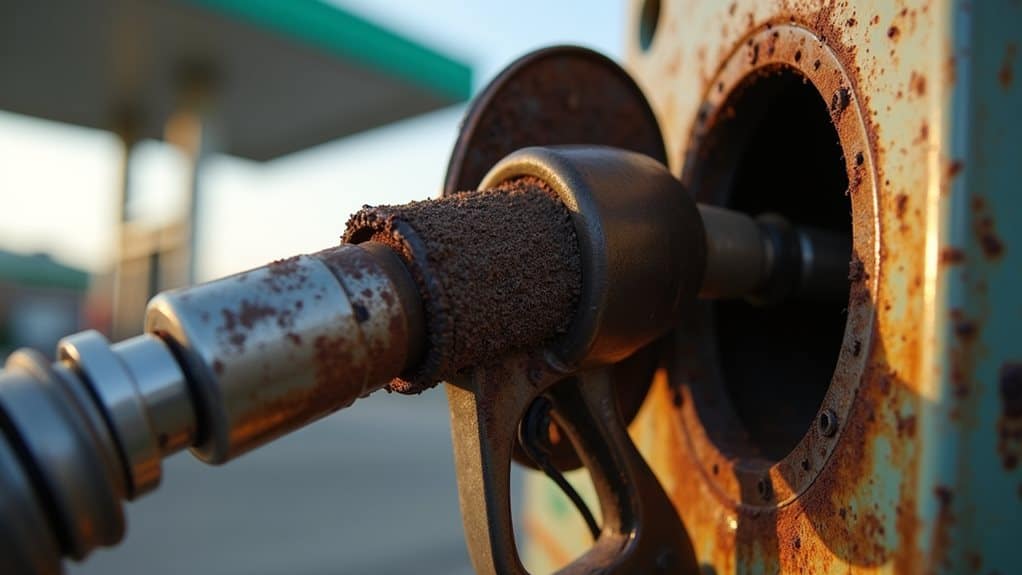
While gas pump slowdowns can be frustrating, understanding common filter issues will help you diagnose and address the root causes of reduced flow rates.
Experts recommend replacing fuel filters every 20,000 to 40,000 miles to maintain optimal performance. Regular maintenance is essential for vehicle reliability, as neglected components can lead to brake line failures that compromise safety.
You’ll often notice symptoms like difficulty starting your engine, sluggish performance, or frequent stalling when filters become clogged. These issues typically stem from aging filters, poor fuel quality, or incompatible fuel types that don’t match your vehicle’s specifications.
The Role of Leak Detection Systems
When you’re dealing with slow gas pumps, leak detection systems play an essential role in maintaining proper fuel flow and safety standards.
If your gas pump’s leak detector trips frequently, it’s often due to pressure loss in the system, which forces the detector to shut down fuel delivery as a protective measure. Modern mechanical detectors like the FE Petro system maintain 1 PSI pressure to ensure optimal fuel flow during operation. Additionally, understanding the potential impact of milky power steering fluid can help in assessing overall system performance and preventing complications.
Understanding how these systems work, from basic mechanical detectors to advanced optical sensors, will help you identify whether a leak detection issue is causing your pump to run slower than normal.
Understanding Leak Detection Basics
Because gas station pumps rely on complex pressurized systems, understanding leak detection basics is crucial for maintaining their best performance.
You’ll find that leaks can be detected through various methods, from simple bubble tests using soap solutions to advanced helium-based detection systems.
Regular monitoring helps guarantee proper pressure maintenance, maximum pump operation, and compliance with safety standards.
Common Detector Trip Problems
Although leak detection systems play an essential role in gas pump safety, they’re prone to various trip problems that can disrupt operations.
Common issues include detector malfunctions, calibration errors, and sensor degradation over time.
You’ll also encounter problems from environmental factors like humidity and temperature changes.
Additionally, cross-sensitivity to non-target gases can trigger false alarms, affecting system reliability.
Pressure Issues Impact Flow
Since pressure issues considerably impact fuel flow in gas pumps, understanding their relationship with leak detection systems is essential for maintaining ideal performance.
You’ll want to monitor your system regularly, as these detectors help identify pressure problems before they become severe.
When properly maintained, they’ll alert you to leaks, worn parts, and other issues that could slow down your fuel delivery or damage components.
Impact of Temperature on Gas Flow
During cold weather, you’ll notice your gas pump runs slower because low temperatures increase gas density and viscosity, making it harder for the pump to move fuel through the system.
As seasons change, the varying temperatures create pressure fluctuations in the gas lines that directly affect pump performance.
You’ll typically experience faster gas flow during warmer months when the gas is less dense and flows more freely through the pump and lines. Additionally, monitoring coolant levels is crucial in understanding how temperature can impact fluid dynamics, as similar principles apply to other liquids in different systems.
Cold Weather Slows Flow
When temperatures drop, you’ll notice a significant slowdown in how quickly fuel flows from gas pumps into your vehicle.
This happens because cold weather increases fuel density and viscosity, making it thicker and harder to pump.
You’ll experience this most with diesel fuel, which can develop waxy buildup in frigid conditions, but even regular gasoline becomes more resistant to flow.
Seasonal Pressure Changes
Beyond individual pumps and fuel properties, larger atmospheric forces play a key role in gas flow rates throughout the year.
You’ll notice seasonal temperature changes affect gas density and viscosity, which impacts how quickly fuel flows through pipes.
When temperatures shift, they create pressure variations that can make gas pumps work differently, especially since cold air is denser than warm air.
Pump Performance and Maintenance
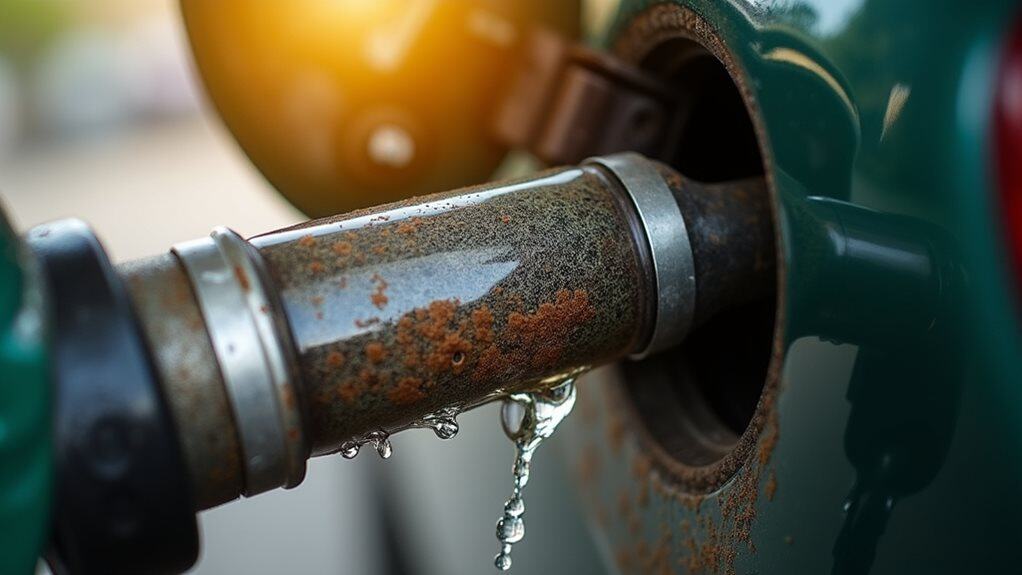
Understanding pump performance and maintenance is essential for keeping your gas pumps operating at peak efficiency.
You’ll notice reduced performance when pumps operate outside their best efficiency point or when mechanical components wear down.
Regular inspections for unusual noise, vibration, and leaks can help identify issues early.
Proper maintenance, including timely component replacement and lubrication, prevents sudden failures and maintains ideal flow rates. Additionally, implementing regular preventive measures can enhance overall pump reliability and efficiency.
Station Equipment and Setup Factors
The proper selection and setup of gas station equipment plays an essential role in maintaining efficient fuel delivery operations.
Quality dispensers with modern digital interfaces, combined with well-maintained underground storage tanks, guarantee consistent fuel flow.
Your station’s layout and traffic flow patterns also impact pump speed, while reliable POS systems and power supplies help prevent slowdowns during peak hours.
Customer Experience at the Pump
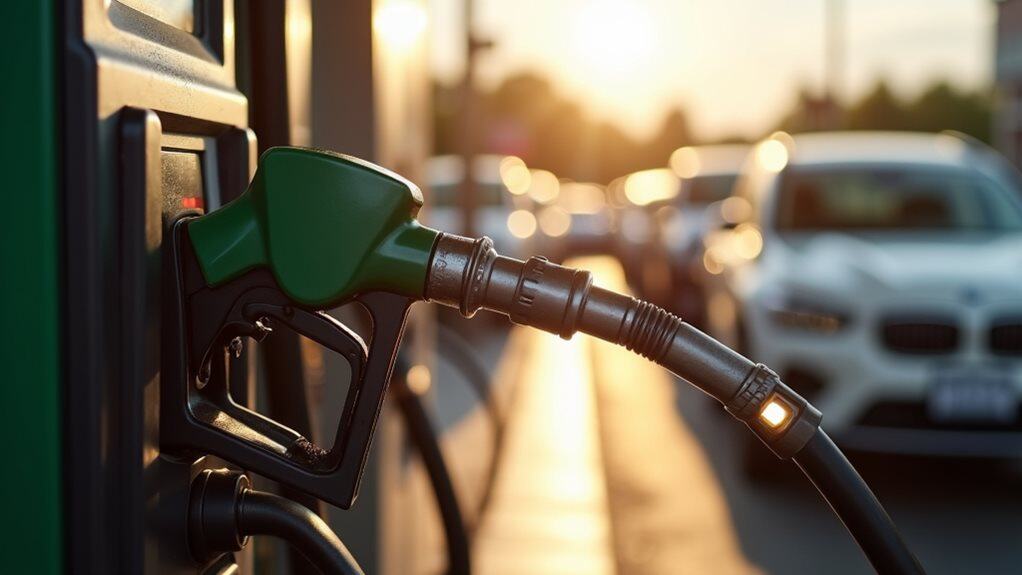
Modern consumers expect much more than just a quick fill-up when they visit gas stations today.
You’ll want efficient payment options, clean facilities, and smart technology that remembers your preferences.
While price and location remain essential factors in your choice of station, you’re likely influenced by digital displays, mobile apps, and the promise of enhanced security during transactions.
Essential Maintenance Practices
Regular maintenance practices serve as the backbone of efficient gas station operations, guaranteeing both safety and ideal performance for customers and staff alike.
You’ll notice that well-maintained stations perform weekly inspections of fuel filters, nozzles, and dispensers to catch potential issues early.
They’ll also check underground storage tanks, maintain proper grounding systems, and make certain fire safety equipment remains ready for emergencies.
Modern Solutions for Optimal Flow
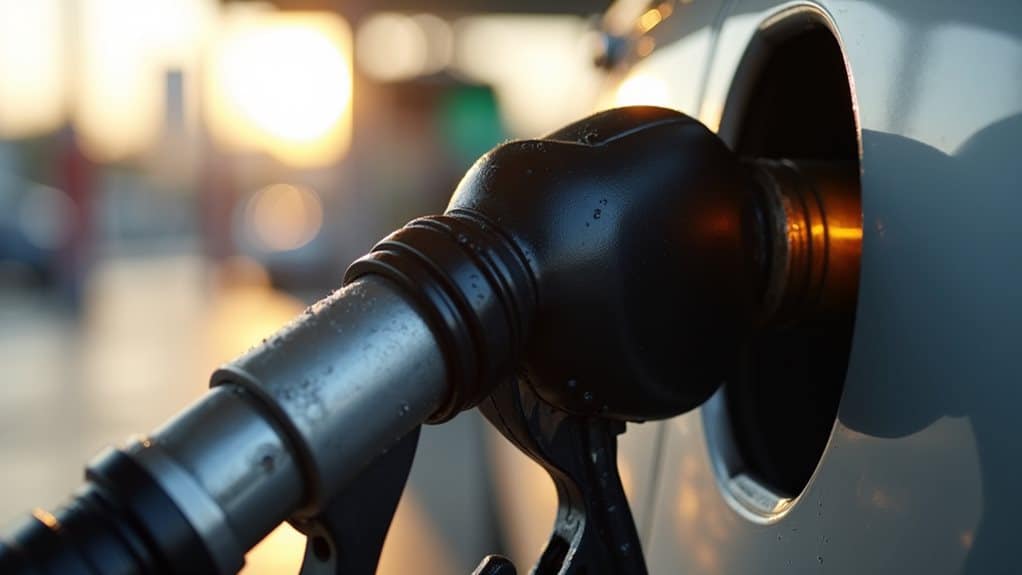
When gas pump performance falls short of expectations, intelligent solutions can revolutionize flow rates and operational efficiency.
You’ll find that modern flow optimizers and conditioning spools help reduce turbulence while maintaining uniform flow.
Variable speed drives let you adjust output to match changing conditions, and real-time monitoring systems enable quick interventions when performance issues arise.
Wrapping Up
You’ll find that slow gas pumps often result from multiple fixable factors, not just one issue. By understanding these causes, from clogged filters to temperature effects, you’re better equipped to identify potential problems at the pump. Regular maintenance, modern equipment upgrades, and proper system monitoring can guarantee ideal flow rates. When stations implement these solutions consistently, you’ll experience faster, more efficient fueling every time you visit.

